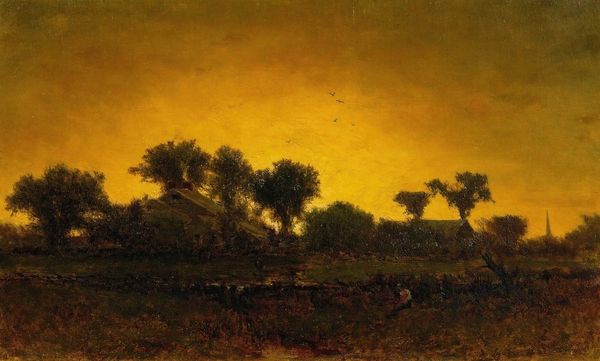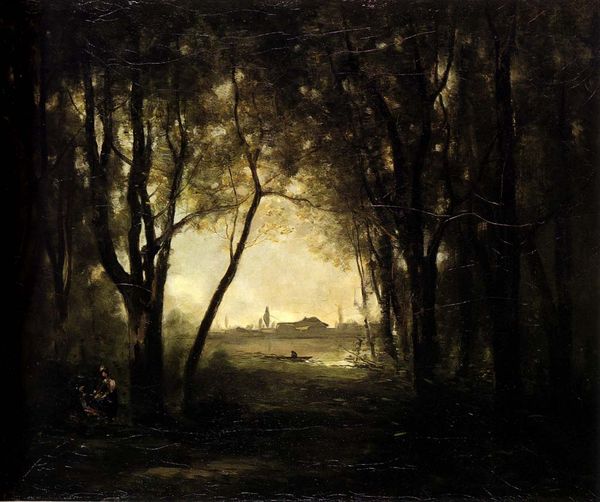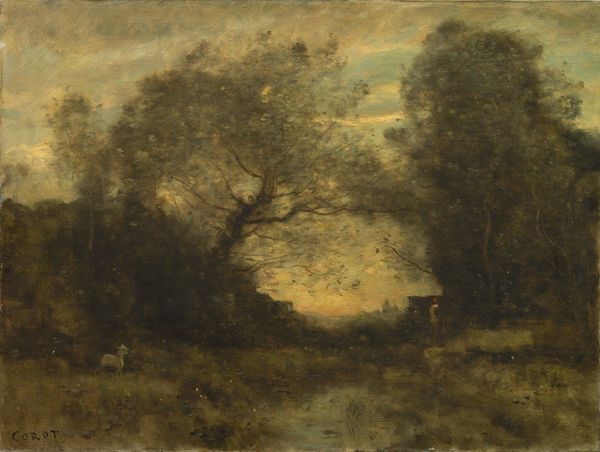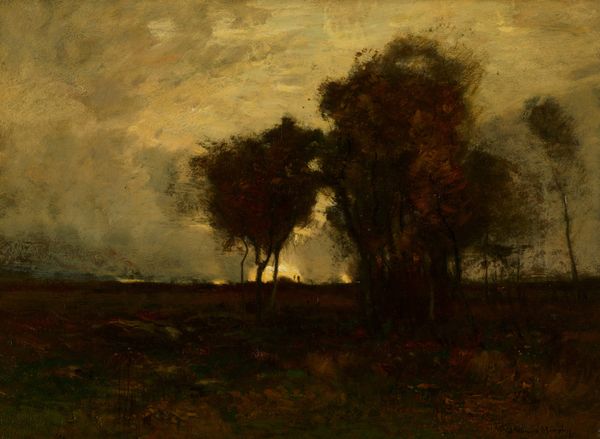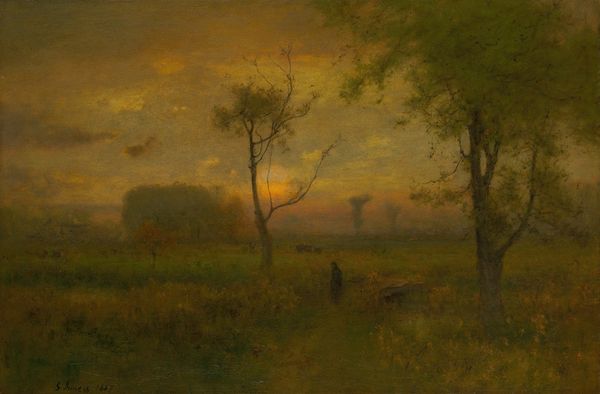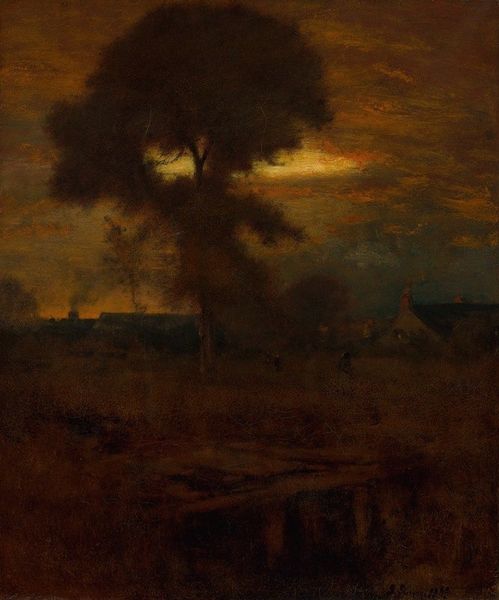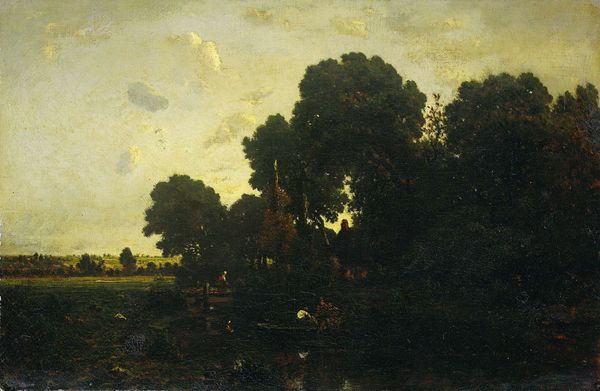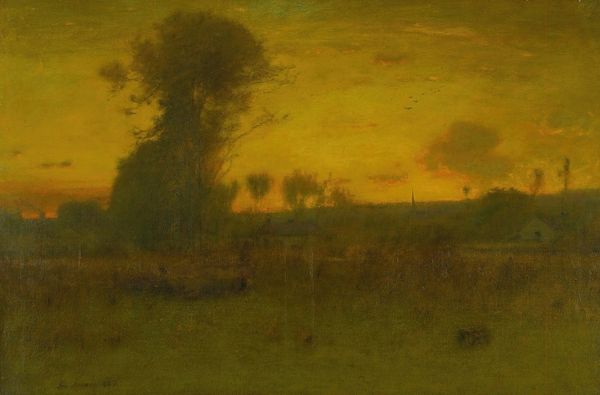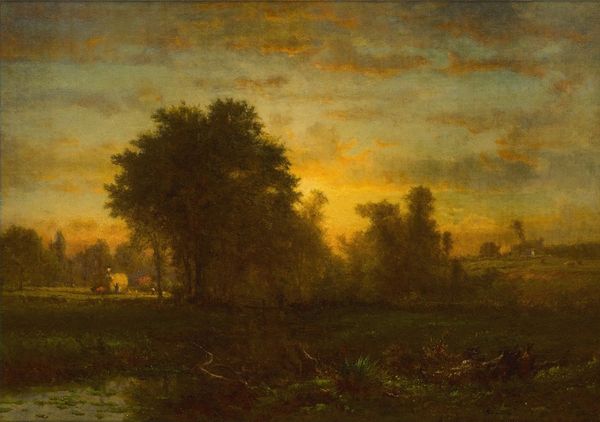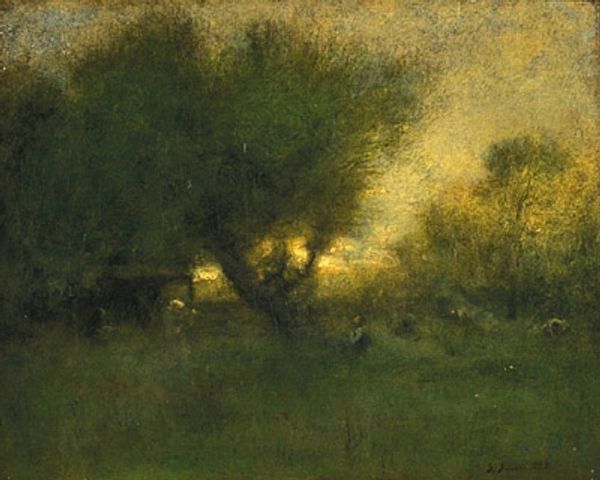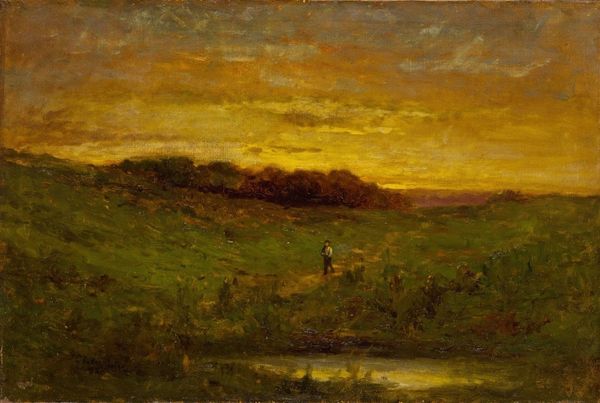
Copyright: Public Domain: Artvee
Editor: Here we have George Inness's "Evening at Medfield, Massachusetts," painted in 1875 using oil paint in a plein-air style. It has such a somber, reflective mood to it. What captures your attention in this piece? Curator: What strikes me is how this painting positions itself within the American artistic landscape of the late 19th century. Consider the burgeoning industrialization and urbanization during that era. Inness, through his landscapes, presents a deliberate counter-narrative. It speaks to the anxieties of a rapidly changing society, doesn't it? How does the image make you feel? Editor: A bit nostalgic, perhaps even a touch melancholic. It feels like a simpler time, idealized. Curator: Precisely. The 'plein-air' approach is also key. Instead of pure representation, he captures the atmospheric qualities of the place and, perhaps more significantly, its feeling, and the way in which such feelings resonated at that moment with a broader American public. Do you notice anything about how Inness directs our gaze? Editor: Yes, the winding path draws my eye into the distance. It feels like I'm invited to step into the scene. Curator: And consider what the path *represents*. It might seem literal but Inness employs it to suggest something about individual movement across—or even against—the wider, perhaps darker and increasingly obscure socio-economic landscape. Does that tension come across, do you think? Editor: It's something I hadn't immediately thought of, but I can definitely see that interpretation. Curator: So, this painting isn't merely a pretty picture of rural America; it’s an artwork actively participating in a discourse about American identity and the impact of modernization. What is your understanding of this painting after this discussion? Editor: I appreciate how this work acts as a time capsule reflecting a period of great change, and its complexities, in American society. Thank you. Curator: It also showed me a more nuanced way of considering these serene images, thinking about how social context inflects what and how the artist chooses to see the landscape.
Comments
No comments
Be the first to comment and join the conversation on the ultimate creative platform.
